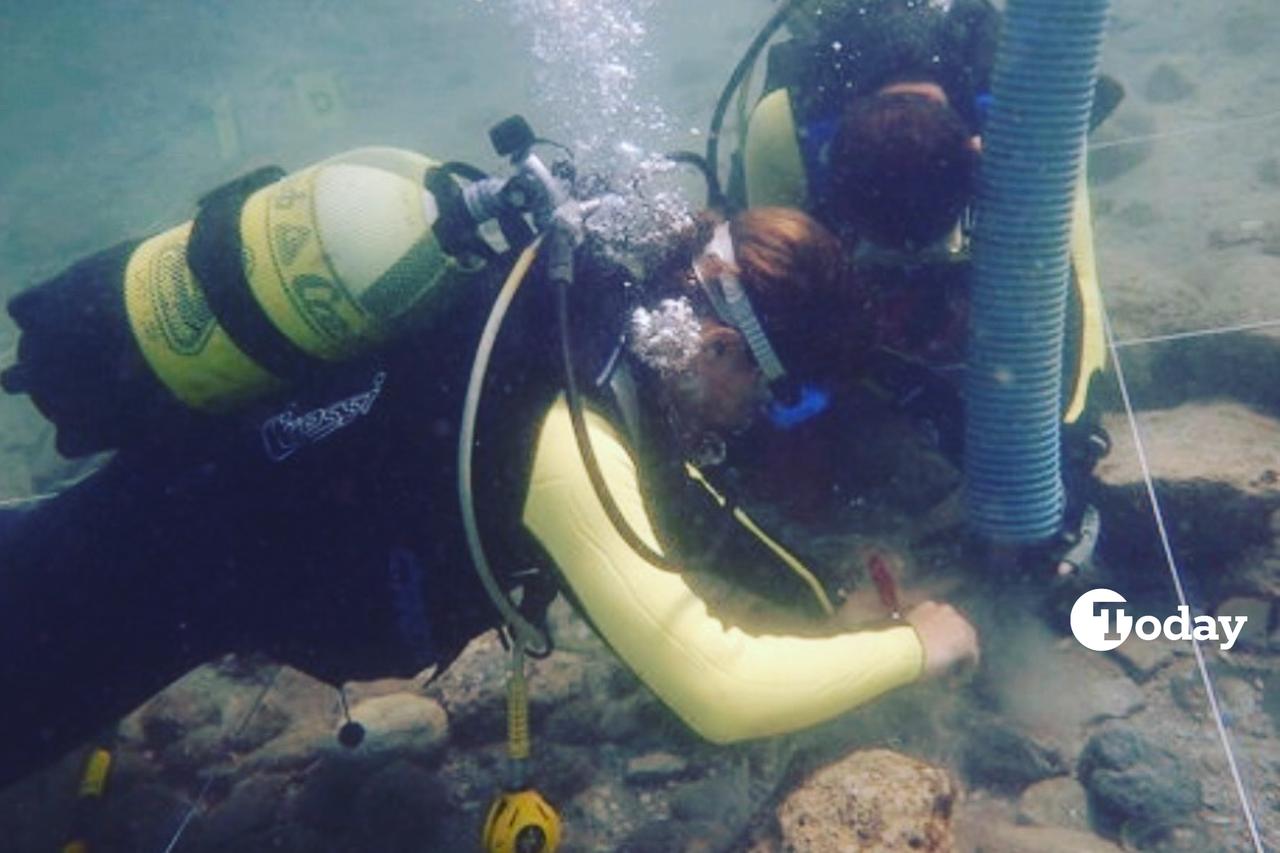
My journey into underwater archaeology began during my university years in Türkiye, sparked by an unexpected encounter with diving. I had always felt at home in the water—I was a licensed swimmer as a child—but everything changed when I joined the university’s Underwater Sports Club. What started as a weekend hobby quickly grew into something much deeper.
My first field experiences were in Kas, one of Türkiye’s most iconic diving spots. Soon after, I joined the scientific excavations at Limantepe, an ancient harbor settlement on the Aegean coast that holds global significance. Limantepe is known for its multi-layered history, stretching from prehistoric periods to the classical era, and it is home to one of the oldest known breakwaters in the world. Working there opened my eyes to how intellectually demanding and physically challenging this field could be.
I was responsible for digital documentation: creating photomosaics and preparing AutoCAD-based excavation plans. These tasks sharpened my technical skills and allowed me to contribute directly to the site’s scientific analysis. That experience laid the foundation for my graduate thesis, which explored submerged architecture and the use of digital tools in underwater archaeology. It was at that point that I realized I had found the field where my curiosity and abilities truly converged.

Today, I continue my work in the United States, where my focus has shifted to submerged sites in lake environments and the digital technologies that bring them to life. Here, photogrammetry, 3D modeling, and high-resolution photomosaics are not only tools for research—they are essential for education, heritage preservation, and public engagement. Collaborative projects between universities, museums, and local governments have shown me how powerful these methods can be in making archaeology accessible, especially for younger audiences.
Working in the U.S. has also changed my perspective. Türkiye and the U.S. offer different strengths: Türkiye excels in interdisciplinary collaboration, rigorous field techniques, and deep cultural engagement, while the U.S. has robust infrastructure and outreach systems that connect research to the public. I now see my role as a bridge between these worlds, taking the discipline and instincts I developed in Türkiye and combining them with the digital accessibility and sustainability models I’ve learned in the U.S.

For me, underwater archaeology is not just about finding traces of the past beneath the waves. It is also about understanding how societies remember themselves and what they choose to protect. I believe the future of this field depends on three key pillars: interdisciplinary collaboration, digital accessibility, and public engagement. Research should not remain locked in academic journals—it should inspire, educate, and connect.
Looking back, my experiences in Türkiye, especially at Limantepe, shaped me as both a researcher and a diver. Now, the projects I pursue in the U.S. allow me to merge that foundation with advanced digital methodologies. Both countries have given me invaluable lessons: Türkiye with its rich cultural heritage and living excavation traditions, and the U.S. with its infrastructure and public-facing approaches.
Exploring history beneath the surface also feels deeply connected to the challenges of today: climate change, environmental degradation, and the risk of losing cultural memory. Diving into the past has taught me that archaeology is more than a technical specialty—it is a call to responsibility. Every time a project reaches students, children, or decision-makers, I feel that I am not just uncovering the past, but also helping to build a more thoughtful and connected future.
About the author—Asena Ozge Yasar is a cultural heritage specialist working at the crossroads of archaeology, restoration, and digital documentation. She has contributed to projects including the Hagia Sophia Grand Mosque, Galata Tower, and Limantepe’s underwater excavations. Founder of the U.S.-based Archrono Academy, she is an active member of ICOMOS, WAC, RPA, and ISCARSAH, focusing on integrated preservation of both land and underwater heritage.